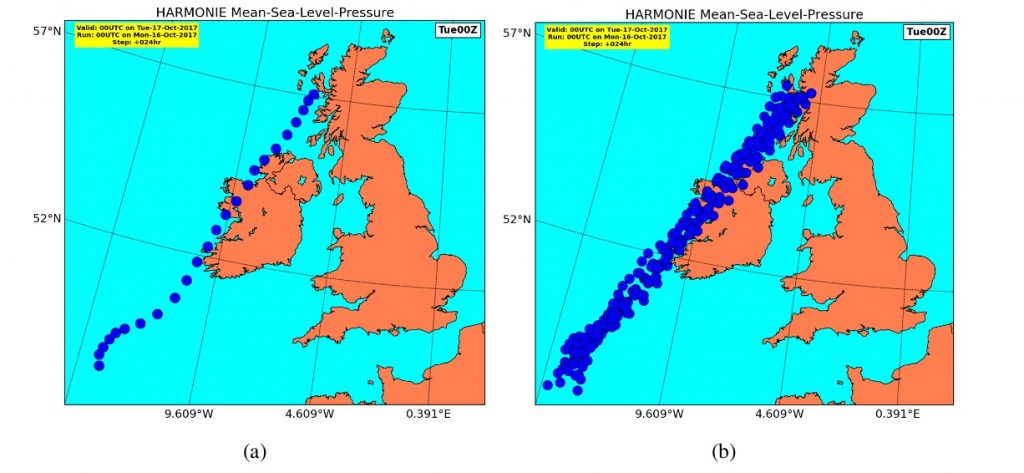Numerical weather prediction (or NWP), the process of predicting future weather patterns by using a computer model of the atmosphere, has advanced remarkably in the last 100 years. NWP can trace its origins to Louis Fry Richardson’s (1881-1953) dreams of a “forecast factory”, where tens of thousands of human computers would calculate the future weather as quickly as it was changing. By the second half of the twentieth century, computer models, based upon the primitive equations of atmospheric dynamics started to become operational. Current models are capable of detailing complex physical processes and features such as valleys and mountains.
Despite major advances, problems still remain. Firstly, the number of available weather observations may be quite large, but certain areas still lack the spatial resolution needed to accurately capture all meteorological phenomena. Ideally, one would need an observation every couple of metres over land and sea to have a complete description of the initial atmospheric state at any one time. Secondly, in order to model the atmosphere’s complex physical processes, assumptions about these processes must made. Making these unavoidable assumptions can lead to errors in the model meaning uncertainty can creep into the forecast. Thirdly, and perhaps the most inescapable issue when it comes to forecasting, is the inherent chaotic nature of the atmosphere. Even the slightest difference in the initial state of the forecasting model can lead to completely different forecasts.
The main tool for tackling these problems is what is known as an Ensemble Prediction System (or an EPS). These systems aim to take the different sources of uncertainty into account by using multiple forecasts with slightly different initial conditions. Using a multitude of forecasts instead of just one single deterministic vision of the future atmosphere increases the chance of correctly forecasting an event and allows the issues outlined above to be taken into account.
Met Éireann currently use two different Ensemble Prediction Systems; the EPS of the European Centre for Medium-Range Weather Forecasts (or ECMWF, of which Ireland is a member state) and the Grand Limited Area Model Ensemble Prediction System (or GLAMEPS). The ECMWF’s ensemble uses 51 different forecasts (or members), predicting future global atmospheric states out to 15 days and beyond. The ECMWF is constantly upgrading its ensemble and in 2016 doubled the horizontal resolution to 18km allowing for an even better representation of global weather patterns. GLAMEPS was developed jointly by the HIRLAM and ALADIN consortia to focus on high-impact weather over Europe such as storms. Compared to the ECMWF EPS, GLAMEPS is more short-range focused, with a forecast length of 54 hours. This 52 member ensemble does however have a finer horizontal resolution running at approximately 8 km. Met Éireann has recently started working on the implementation of a high-resolution EPS for the very short range (~36 hours) using an ensemble version of the deterministic model HARMONIE-AROME. Inspiration for the development of an Irish Regional EPS (IREPS) is taken from the implementations in other HIRLAM countries. IREPS is expected to become operational in the Autumn of 2018.
EPSs are the future of forecasting because they take into account the uncertainty associated with predicting the weather and give the forecaster a clearer picture of the evolution of the atmosphere. Continued growth in the spatial and temporal resolution of observations, further research into more detailed representations of physical processes and improvements in computing power will all help EPSs become more accurate in the picture they paint of our daily weather.

(a) Projected track of the central low pressure of Ophelia over a 24-hour period from the operational run of HARMONIE-AROME at 0000 UTC on the 16th of October. (b) Projected track of the central low pressure of Ophelia over the same period for each of the ensemble members of IREPS – this illustrates the confidence we could have in the track of Ophelia.